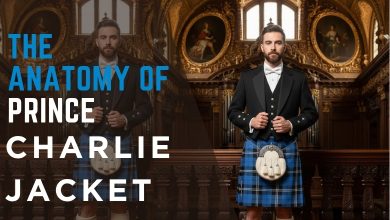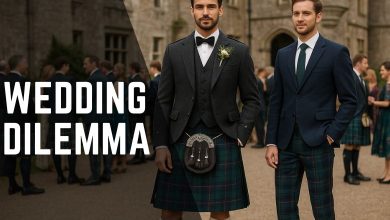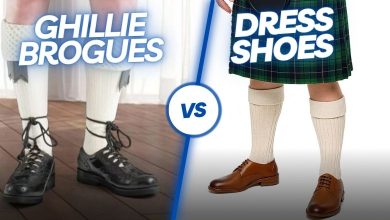Must-Have Kilt Accessories for Every Occasion
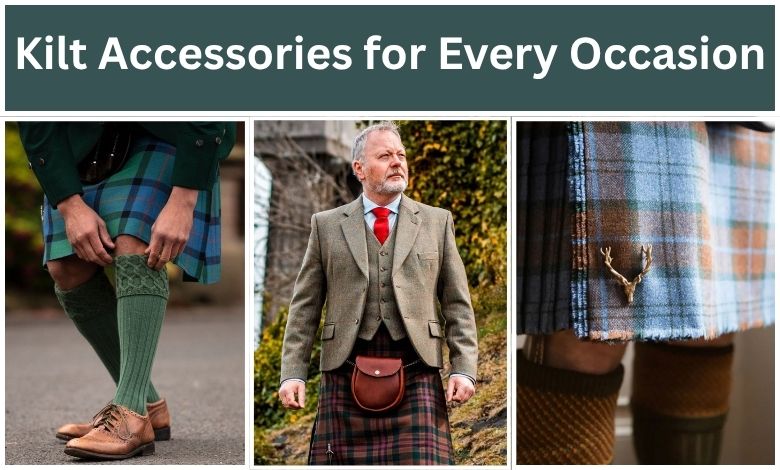
Only traditional tartan kilts were worn once considered as attire for men only. But now men’s kilts are available in different variations. However, the things remaining the same are kilt accessories. Though some changings have impacted the number of accessories, most of them are unchanged since the beginning. The number of attachments change with occasion but a few of them are the permanent partners of kilts. This article intends to tell you about these accessories. But before we talk about these accessories, let’s begin with understanding Highland Dress etiquette.
Understanding Highland Dress Etiquette
The story of Highland Dress Etiquette revolves around respecting and admiring history. Though it is not a strict dress code in Scotland, people still prefer wearing it, especially at formal events. Once a person chooses to wear Scottish attire, whether they are Scot or not, maintaining respect becomes their first responsibility.
It’s important to care for the size and number of attachments. In earlier times, there were fewer accessories, but the number increased with time. The kilt pin, for example, is often considered the final addition to the outfit in the 19th century. Knowing what needs to be attached is key to wearing the dress properly. Thus, the role of occasions is quite significant here.
Accessories by Occasion

We find this point to be more important to discuss prior to enlist accessories. Usually, there are three types of events: formal, semi-formal, and casual events while attachments change accordingly. In formal events, there is a dress code like tartan kilts and specific pairings with Prince Charlie Jacket.
Most of the attachments remain the same in semi-formal while Tweed or Argyll jackets become the priority. In casual events, there is no particular dress code from different kilt types to variations in shoes and reduction of attachments.
Must-Have Kilt Accessories
Let’s talk about the kilts accessories that must be attached without concerning event type. In other words, ignoring any of these pairings might be equivalent to disrespecting the attire.
The Sporran
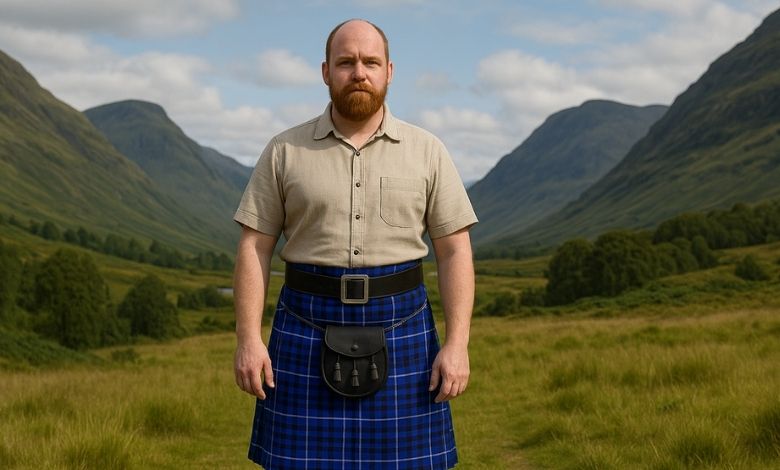
Sporran is a small bag or a leather made pouch that Scots are seen wearing at front. It is attached with straps and chains. The traditional purpose of this bag was to offer utility. But the things are changed now, sporrans intend visual appeal too. In other words, they serve dual purposes today. Moving to topic, kilt attire is not complete without sporran whether casual or formal outfit.
Kilt Belt and Buckle

Kilt belt and buckles are also a must-have accessory today. Like sporrans, they also serve in two ways but their responsibilities vary. First they help in secure fit. Second, chromed buckles mostly have Celtic designs on them representing history.
Kilt Pin
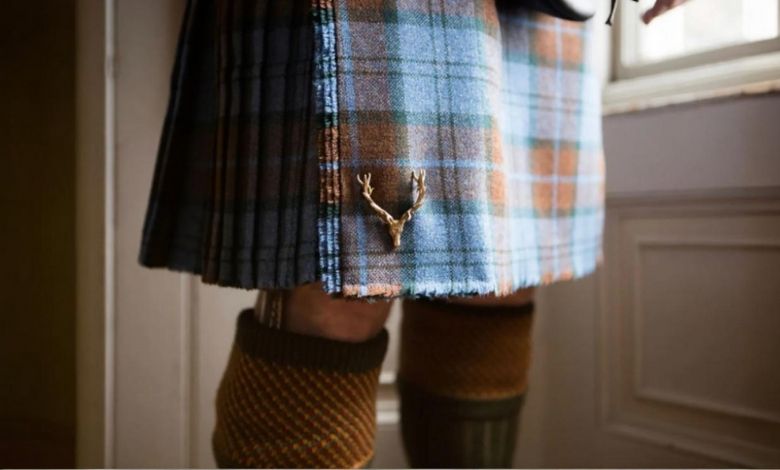
Why don’t we discuss the latest addition to Scottish kilt outfits? It is a kilt pin, as mentioned earlier. Though small in size, it is the most important part of the lower half. Its purpose is to weigh down the outer apron and keep it in place, while also adding a decorative and traditional touch.
Kilt Hose
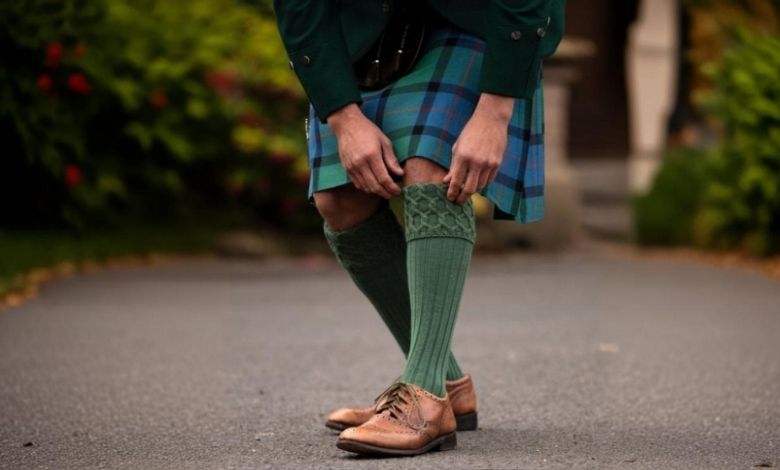
These long socks form a tidy cuff when folded down, reaching just below the knee. Kilt socks or hose come in a variety of colours, but they often go well with the kilt and other accessories. They are necessary not just for fashion but also for warmth, comfort, and keeping a well-balanced Highland appearance.
Ghillie Brogues
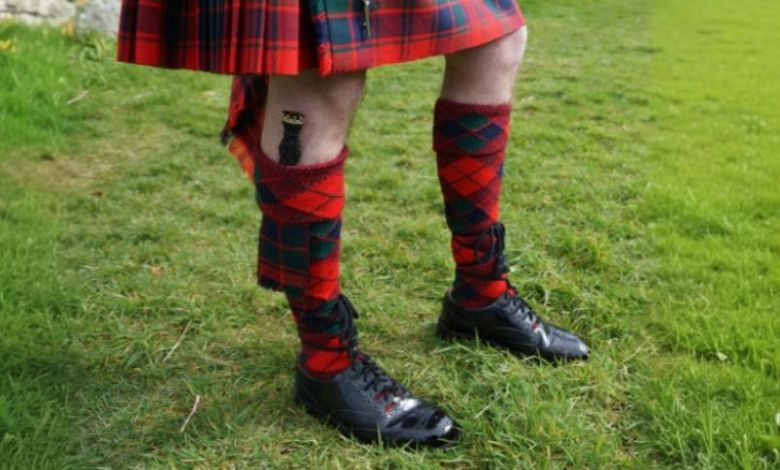
Ghillie brogues are special Scottish shoes that complete the traditional kilt attire. Without tongues and with long laces wrapped around the ankle, they’re designed to be both functional and fashionable. Worn at all event types, these shoes show tradition while also offering modern-day comfort. They’re simply unmatched in complimenting the kilt’s unique heritage.
Headwear (Optional)
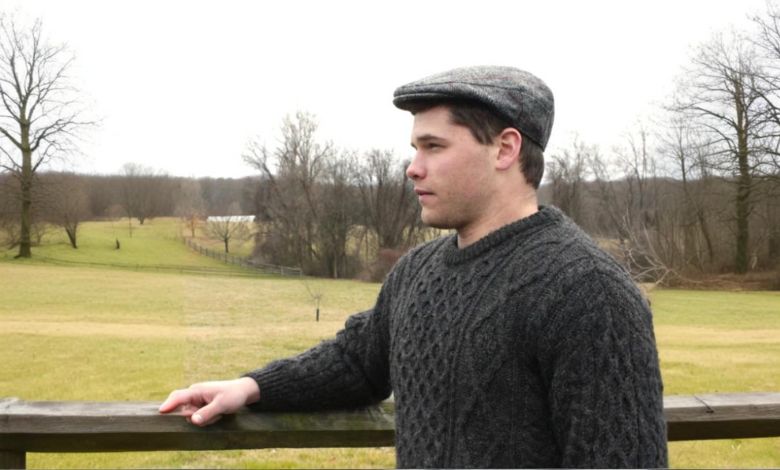
Though not worn by everyone today, traditional headwear still holds a place of respect in Highland attire. Scottish hats like the Balmoral or Glengarry caps are typically seen in formal gatherings. They often carry clan badges or decorative pins. Wearing one adds a final layer of authenticity and pride, especially during national celebrations or ceremonial events.
FAQs About Kilt Accessories
What occasions can you wear a kilt?
Scotland and Ireland are the primary countries where kilts are traditionally worn. In Scotland, kilts are everyday wear but people consider them an essential dress code for formal, semi-formal, and even casual events. On the other hand, apparel is specific to only ceremonial or formal occasions.
Are the boys and girls kilt accessories the same?
The fundamental accessories for boys and girls wearing kilts are similar but still there are some key differences. Girls wear tartan sashes while boys have fly plaids.
Why do people have a knife with a kilt?
A Kilt knife or Sgian-dubh is part of complete outfits and it is not an everyday item to attach. Initially, it served as a weapon for self-defense. Today, Scottish knives complement the attire and serve as a traditional entity.
Add Elegance to Scottish Attire with SKC
Scottish Kilt Co. brings tradition and style together in every stitch. Whether you need an outfit for a formal ceremony or a casual gathering, we have everything to add a classical charm to your attire. Our every piece honors Scottish heritage even if you are looking for a sporrans or belt. Choose SKC to complete your look with pride, elegance, and authenticity—because no kilt attire is truly complete without the right accessories.
